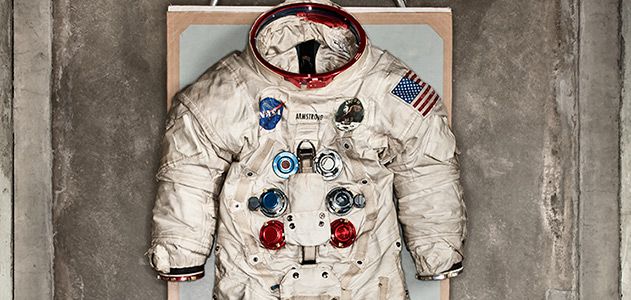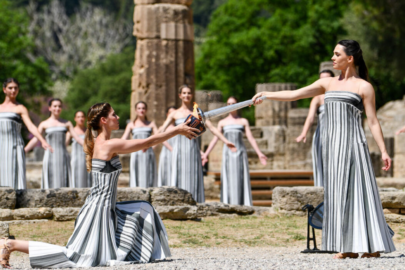o one knows what Columbus was wearing when he set foot in the New World, but on July 20, 1969, when Neil Armstrong took his “one giant leap” onto the Moon, he was clad in this custom-made spacesuit, model A7L, serial number 056. Its cost, estimated at the time as $100,000 (more than $670,000 today), sounds high only if you think of it as couture. In reality, once helmet, gloves and an oxygen-supplying backpack were added, it was a wearable spacecraft. Cocooned within 21 layers of synthetics, neoprene rubber and metalized polyester films, Armstrong was protected from the airless Moon’s extremes of heat and cold (plus 240 Fahrenheit degrees in sunlight to minus 280 in shadow), deadly solar ultraviolet radiation and even the potential hazard of micrometeorites hurtling through the void at 10 miles per second.
The Apollo suits were blends of cutting-edge technology and Old World craftsmanship. Each suit was hand-built by seamstresses who had to be extraordinarily precise; a stitching error as small as 1/32 inch could mean the difference between a space-worthy suit and a reject. While most of the suit’s materials existed long before the Moon program, one was invented specifically for the job. After a spacecraft fire killed three Apollo astronauts during a ground test in 1967, NASA dictated the suits had to withstand temperatures of over 1,000 degrees Fahrenheit. The solution was a state-of-the-art fabric called Beta cloth, made of Teflon-coated glass microfibers, used for the suit’s outermost layer.
Read Also:
Greek Foreign Ministry: Turkey’s persistence in breach of rules does not create legal rights
What is the 25th March National Holy Day in Greece about?
For the suit’s creator, the International Latex Corporation in Dover, Delaware, the toughest challenge was to contain the pressure necessary to support life (about 3.75 pounds per square inch of pure oxygen), while maintaining enough flexibility to afford freedom of motion. A division of the company that manufactured Playtex bras and girdles, ILC had engineers who understood a thing or two about rubber garments. They invented a bellowslike joint called a convolute out of neoprene reinforced with nylon tricot that allowed an astronaut to bend at the shoulders, elbows, knees, hips and ankles with relatively little effort. Steel aircraft cables were used throughout the suit to absorb tension forces and help maintain its shape under pressure.
Read more: smithsonian





































